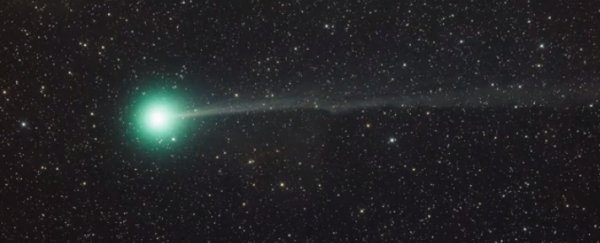This year is already shaping up to be a good one for sky watchers, with C/2014 Q2 (Comet Lovejoy) now visible to the naked eye, and getting brighter by the day.
And it looks amazing, as the three-hour time-lapse of the comet captured by Phil Hart on December 28th, 2014, shows above.
On January 7th, the comet will make a once-in-a-lifetime pass of Earth at a distance of around 70 million kilometres (44 million miles), and is predicted to have a fourth magnitude brightness - a measurement used by astronomers that means it will be easily visible in dark skies without the need of a telescope.
But even though the comet is visible to the naked eye, it looks even better through a telescope, as the footage above shows. Up close you can see that the comet glows green, as the molecules its made up of react to sunlight.
So how can you see it yourself? Luckily, the comet will be passing near Orion next week, which makes it relatively easy to find, but you can also find out more about its position with this Sky and Telescope path map.
Unfortunately the comet is moving out of the southern skies, but those living north of the equator should be able to see it quite easily.
Regardless of where you are in the world, you'll also be able to see live footage of the comet over on Virtual Telescope Project on January 6th and 11th.
And it's worth checking it out - this comet takes around 14,000 years to orbit the Sun, which means it started very very far out in our Solar System (its orbit takes it out to a distance of nearly 90 billion kilometres, as Phil Plait explains over at Slate's Bad Astronomy blog). This also means that none of us are going to live long enough to see Comet Lovejoy pass by this way again.
So don't forget to watch the skies in the coming weeks. Space is putting on a show for us.
Sources: Bad Astronomy, Sky and Telescope
